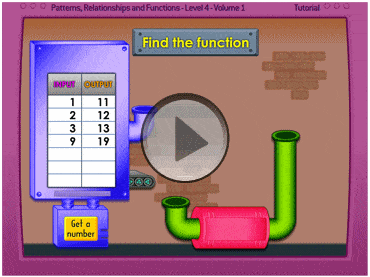There has been a lot of political debate lately about class size. Many people want to convince the public that in doesn’t matter how many kids we put in a classroom, they will all learn. In a recent discussion amongst teachers on Facebook, there were teachers who had class sizes of 32 Kindergarteners and 40 Fourth Graders. When I hear this, I am always blown away! I’ll be honest, I’m a lucky teacher. I’ve never had a class bigger than 24, although when I left Georgia almost 2 years ago, they had raised the class size of 4th and 5th grade to 28, and that was a lot of bodies in the computer lab!
I’ve talked a lot about the new school I’ve been blessed to land in this year (The International School of Morocco), but one thing I haven’t mentioned is my extremely small class size. I guess part of me feels guilty to have a class of 8 when I know there are teachers around with classes of 32 and 40. Yes, you read that right, I have 8 students right now, 4 third graders and 4 fourth graders. We are hoping for more students as the year moves on and more people learn about the school, but the school has a permanent classroom maximum of 18 per class (and 9 per grade level within a class, to keep a multi-age classroom proportionally balanced). In the mean time, I have simply feeling blessed to have the experience to teach such a small class. I’ve never taught such a small 
First of all, we spend less than 10 minutes a day on “management”. In fact, I have no reward/discipline system besides taking time away from recess. I have taught one quiet symbol, but I rarely need to use it, and simply use it to help students recognize transitions. Now, I don’t have angels at all, but with only 8, there’s no time or place of students to not do what they are supposed to. If someone is off task, it is instantly obvious, and very easy to get them back where they need to be. There’s very little wait time, as I don’t have 12 other students to attend to, so this also eliminates that “down time” that often gives students an opportunity to act up. In addition, with only 8 of them, I speak to most of the parents daily or weekly and it’s not overwhelming at all. This communication enhances behavior and spirals into one nice, calm, productive classroom.
All of this calmness was actually discerning to me the first few weeks of school. So was how quickly we got through activities. After 7 years of teaching, I’m pretty good at judging how long an activity will take. However, when there’s only 8 students, there’s less explaining, less transitions etc. and so we simply get through activities faster. For my students, this of 
This extra time allows me a chance to do activities I would never even have considered doing. For example, this week, my class learned Geometry through Art. We found information on four abstract artists and created paintings, including splatter paint! We also have time 
I know some of you are right now going, well you just have 8 good kids, that’s all. I do have good kids, but they aren’t without their challenges. For 4 of my 8 students, this is their first year of English. Some of my other students have specific learning challenges, and two of my students are way ahead of their grade level expectations and need a serious push. It sounds challenging, but with such a small group, I really get a chance to sit and work in a small group or one on one setting with EACH child EVERY DAY, which is something I’ve never been able to do before. Teaching has always been about prioritizing my time, giving the most to those who need the most and finding independent activities that stretch those who don’t need me as much. This year, it’s all about focusing on each and every child.
If I didn’t believe before that class size matters, this year has convinced me that in a smaller class, students succeed, teachers are less stressed, and parents receive more communication.
Dare I ask, how many kids are in your class this year?























 Pre-Historic Climate Change
Pre-Historic Climate Change Scientist Features
Scientist Features



![Everythings-Intermediate-Expo7222232[1] Everythings-Intermediate-Expo7222232[1]](https://blogger.googleusercontent.com/img/b/R29vZ2xl/AVvXsEgQuB7gf-Y28TNqgtSTRQaHflOyqd06XtK8U3bgRIh-HPuY41dQzfxI4iwegVoqpFqIgOfDmOWrt14ZsR_4lYQuueyfPzc_jQmIZRSEJzlngkYNk9LS3uujTCfsTp6sph7698VKPdJO7twc/?imgmax=800)
![signature_thumb1_thumb1_thumb_thumb_[1] signature_thumb1_thumb1_thumb_thumb_[1]](https://blogger.googleusercontent.com/img/b/R29vZ2xl/AVvXsEiMMApOWmJpltgHF1ME3rKq-I3HAldhkBEzl593Gh0SytKQC5TGWO9UVh6WUgaNWXajhyIZ53jCC1G9XSvGvW2ajLa_UZOJznsxDc4bBKL9I-is8mbcvXa-lwa_n_qQvToZ7nMIuSsIN_zc/?imgmax=800)
















